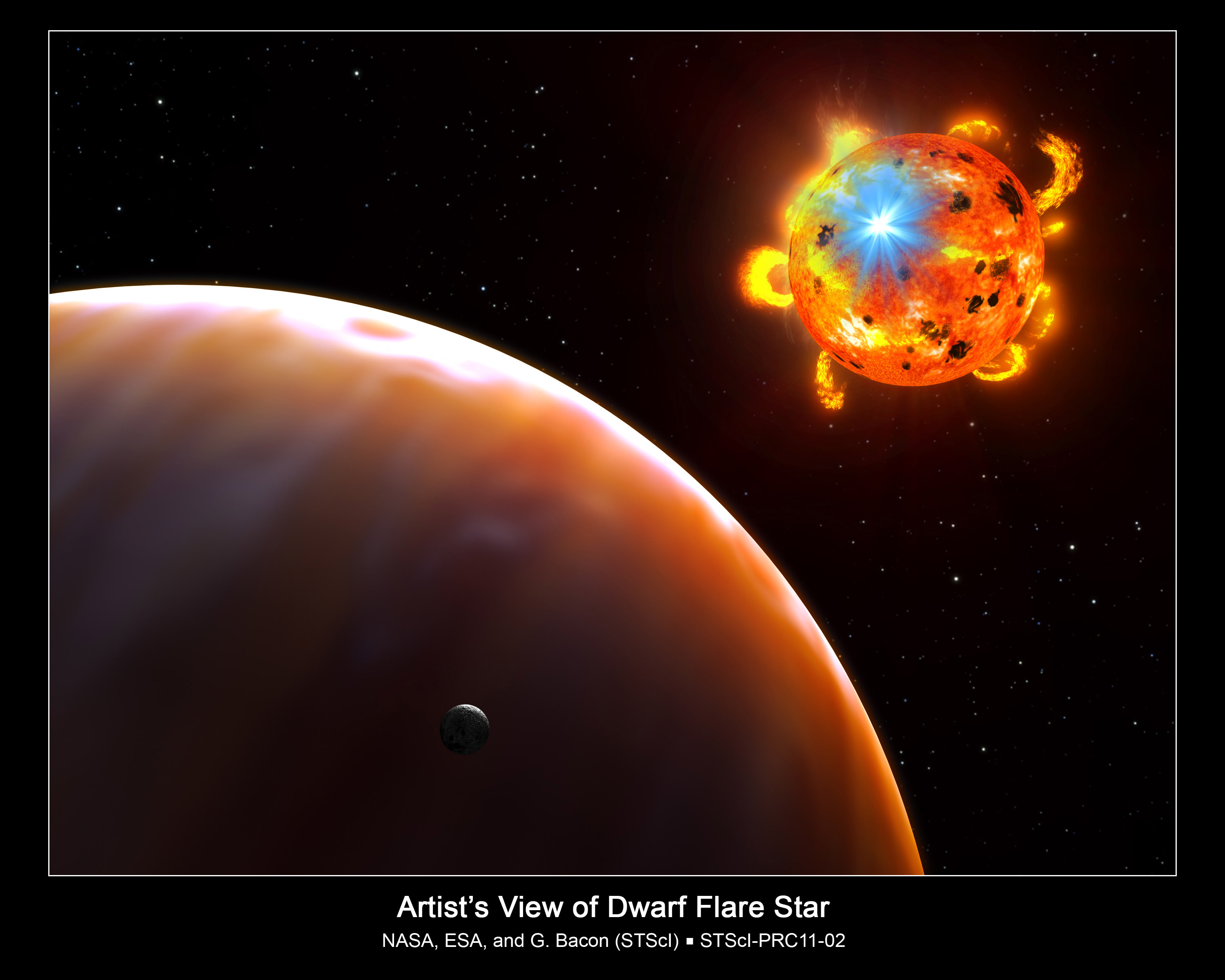[/caption]
For a long time, astronomers have known that stars often have troubled childhoods. They suffer from frequent and violent flares. But eventually, as they settle onto the main sequence, stars grow out of their destructive ways, which is thankful for us since large flares could do some serious damage to our biosphere. A new study confirms expectations that some stars never outgrow their roguish ways and that the smallest stars can be prone to the most frequent flares.
The study uses data from the Sagittarius Window Eclipsing Extrasolar Planet Search (SWEEPS) survey conducted by the Hubble Space Telescope. This survey was conducted over a seven day period in 2006 and originally designed to search for transiting planets by repeatedly imaging over 200,000 stars for sings of transits. However, since the exploration contained so many red dwarf stars, the smallest and most common stars in the universe, a team led by Rachel Osten of the Space Telescope Science Institute was able to use it to constrain the rate of flares on these diminutive stars.
The team eventually discovered 100 stellar flares, some of which increased the overall brightness of their parent star by as much as 10%. In general, most flares were short, lasting on average a mere 15 minutes. Some stars flared multiple times. These flares weren’t limited to simply young stars, but also, highly evolved stars, including several variable stars which appeared to flare more often.
“We discovered that variable stars are about a thousand times more likely to flare than non-variable stars,” Adam Kowalski, another team member, says. “The variable stars are rotating fast, which may mean they are in rapidly orbiting binary systems. If the stars possess large star spots, dark regions on a star’s surface, that will cause the star’s light to vary when the spots rotate in and out of view. Star spots are produced when magnetic field lines poke through the surface. So, if there are big spots, there is a large area covered by strong magnetic fields, and we found that those stars had more flares.”
Part of the reason that dwarf stars are though to flare more comes from the fact that they have deep convection zones (shown by their lack of lithium in the photosphere which is destroyed by convection which drags it to depths hot enough to destroy it). This bulk movement of ionized particles creates a dynamo and strong magnetic fields on the star. When these fields become especially tangled, they can snap and spontaneously reform in a lower energy state. The energy lost is dumped into the stars outer layers, heating them with tremendous amounts of energy and releasing large amounts of ultraviolet, X-ray, and even gamma radiation as well as charged particles. In more extreme circumstances, the fields don’t immediately reform but swing outwards as they unwind themselves, dragging large amounts of the star with it, and flinging it outwards in a coronal mass ejection (CME).
One of the results of the enhanced magnetic activity is a larger number and size of sunspots. According to Osten, “Sunspots cover less than 1 percent of the Sun’s surface, while red dwarfs can have star spots that cover half of their surfaces.”


This is one problem with the idea of bio-planets around M class stars. They in general tend to be quite variable or sporadic with flares.
LC
On the surface this would seem to make life on any world in orbit of such a star unlikely, however I think it worthy to note that even here on Earth there are many organisms capable of withstanding tens or even hundreds of times the average background radiation levels. Also if I’m not mistaken any terrestrial world residing within the habitable zone of an M class star would due to it’s close proximity to its primary be tidally locked. Point being perhaps the twilight and near night side of the planet would be afforded some measure of protection allowing life to take hold.
Maybe, so long as the flaring is not too severe.
LC
Yes, but durable organisms are evolved, the ancestral state (RNA world) was very likely less robust.
Also, D. radiodurans seems to have acquired its hardiness against radioactivity as a secondary characteristic of evolved hardiness against dessication. It is very hard (i,e. impossible) to evolve if your genome is suddenly shattered on a massive scale. [IIRC I have a reference somewhere.]
Personally (layman) I think M stars are interesting, but as a result of the numbers game. I.e. by sheer numbers (M stars are plentiful) calmer stars, and planets with initially dense atmospheres, will exist to some extent. Also, if violent stars tend to be binaries they are naturally restricted, and to the class that is less likely to have interesting planets.
In looking for signature of life M-class stars make for a possible class. After all there are a whole lot of them. That would suggest a wide range of possible planetary configurations. I do think that for a planet to have a strong spectral signature for life that we can detect the star itself probably should be fairly calm. We might consider Mars, where the indicators and suggestions for life wax and wanes. This is even though we have machines on the surface there. Trying to ferret out if a planet several hundred light years away is biologically active will be hard. The planet probably should hold a fairly rich ecosystem of life.
LC